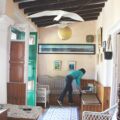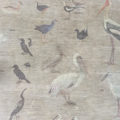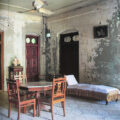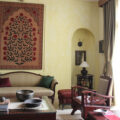Minimal Intervention
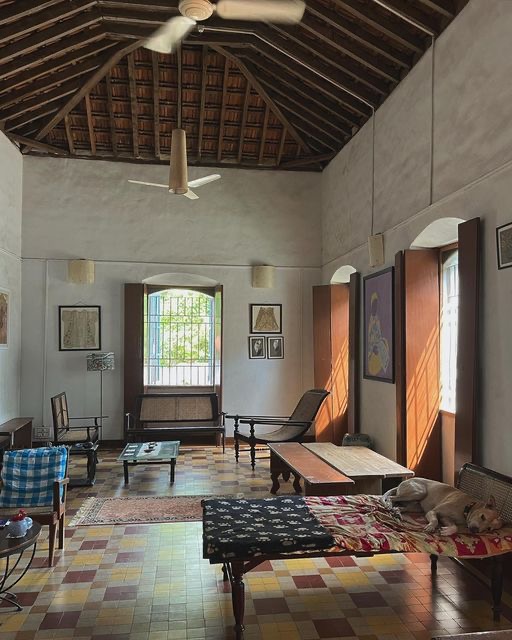
I’ve lived in Goa for over a year now and have seen many an old house in this brief period. I was particularly drawn to a home, not far from our studio in Goa owned by Heta Pandit, writer and researcher on heritage . It’s authenticity spoke to me. In every way this house bears the mark of Heta, yet it has graciously been allowed to retain its original character. The house hasn’t been stripped of personality with plastic paint, UPVC windows, vitrified tile and out-of-context false ceilings like many other old houses in Goa under renovation today. This is a house that has been treated gently and that is inspiration for the work we do, as the projects we undertake are similarly thought out. My visit was extremely insightful and I enjoyed listening to the many stories about the house and it’s renovation that that Heta narrated. I hope you enjoy the space and conversation as much as I did.
I had spent 11 months looking for a house in Goa. I had run through 24 houses and I was almost at the end of my tether when I found this one. The broker did not even have the keys to the house and yet I knew that this was it. There was a tiny crack in the window and I stood on the tips of my toes, grabbing the moulding with my fingernails and looking through that one tiny crack. All I could see was a sliver of the flooring and my heart skipped a beat. Yes, I said to myself and to him. This is it. A house calls out to you, speaks to you in a secret language.
What alterations did you make to the house when you bought it?
The storeroom had a loft that I took down because it had been infested with termites and there was also a loft in the middle room that I did not need so I took that down. There were no bathrooms in the house so I had to carve a bathroom between two bedrooms. One bedroom became a little smaller but then one needed a bathroom for the guests! The kitchen of any house, big or small, is always the room with the most electric vibrations. Perhaps because so many women have made it their work space in the past. Perhaps because they have put in their feminine energy, their creativity into that space. So, I made the kitchen my bedroom and put in a new bathroom at the end. This is my very own space; my refuge.
Why do you choose to live in an old house when there’s a growing trend towards apartment living in India?
I’ve lived in houses my whole life! So, I am naturally more comfortable in a house. There is nothing wrong with living in an apartment. I have seen people surround themselves with beautiful things in their apartments too. The point is not about old houses or new apartments. It is living with memory. Surrounding yourself with things that remind you of who you are. A home that gives you the refuge you need when you return home from the outside world; a living, breathing space that reflects your taste, your personality, your origins, your personal history.
What are your thoughts on the kind of restoration being done on houses today?
I cannot pass judgement on the way restoration is being carried out today but I can speak for myself and all I can say is that I feel the spirit of the house before I act. Sometimes an architect wants to impose his or her own personality on the house, changing it drastically. That is neither conservation nor restoration. That is simply falling between two stools. I have been blessed with four houses. Each of these has a personality of its own. Each of these houses has been turned around for a purpose. I believe that a house is like any other member of the family and must make a contribution to the family’s income and upkeep. The house in Bandra is ideally suited for film shoots. The houses in Panchgani are ideally suited to work as homestays. The house in Goa is my home but can double up as a homestay if I need to turn it around.
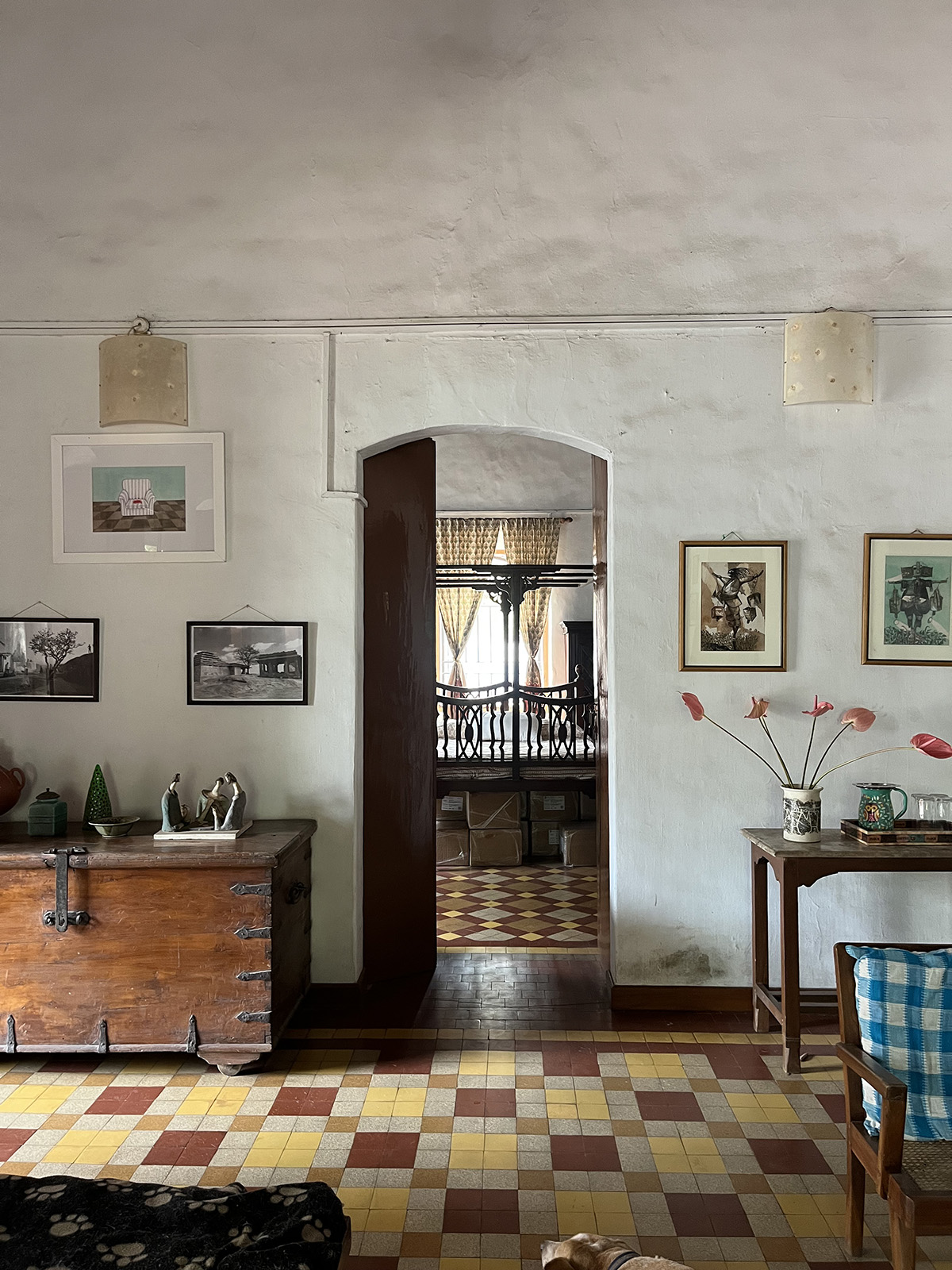
This is part of the Living Room. The art, furniture and light shades seen here in the living room were locally sourced

Hanging on the wall in this corner is a gown belonging to Heta’s mother
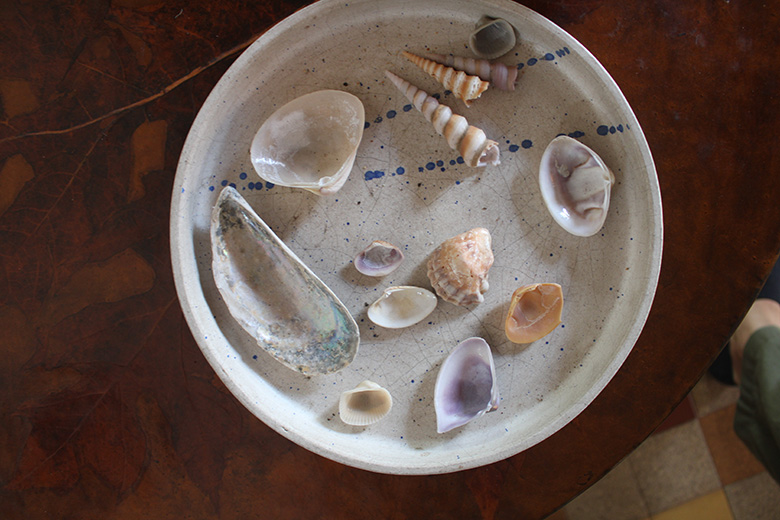
On a table in the Living Room are shells that were collected from Colva beach by Heta’s nephew his friends on a memorable trip
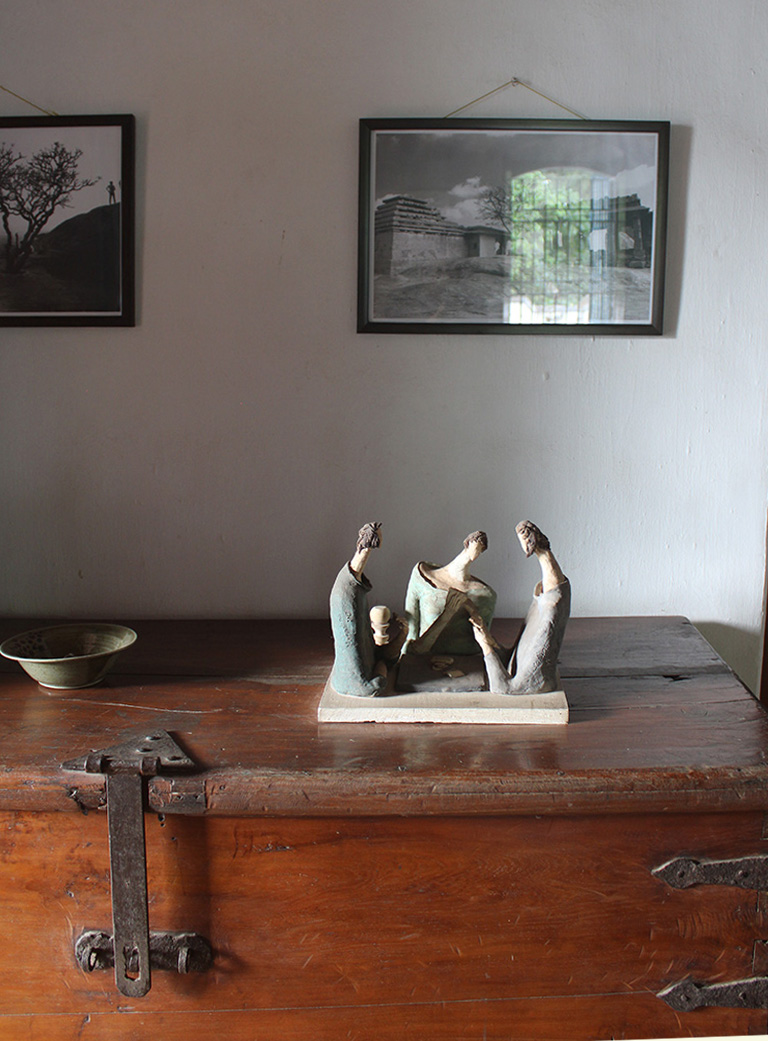
At the entrance are The Card Players by Verodina Ferrao D’Souza, a terracotta sculptor and ceramist

In the corner is Heta’s grandmother, Tehmina Rustomjee Patell’s wedding blouse. The bench came with the house
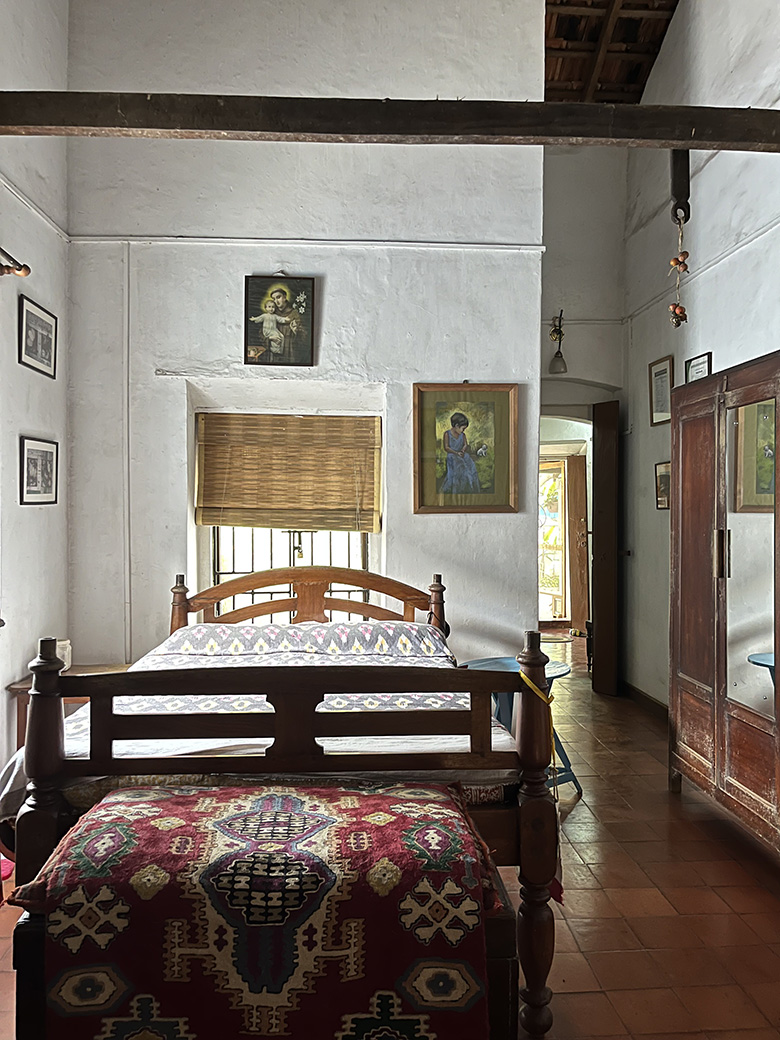
This is Heta’s bedroom. The bed came with the house. There’s a well on the other side of the open window where she can hear the water gurgling, the plop of the catfish and frogs croaking
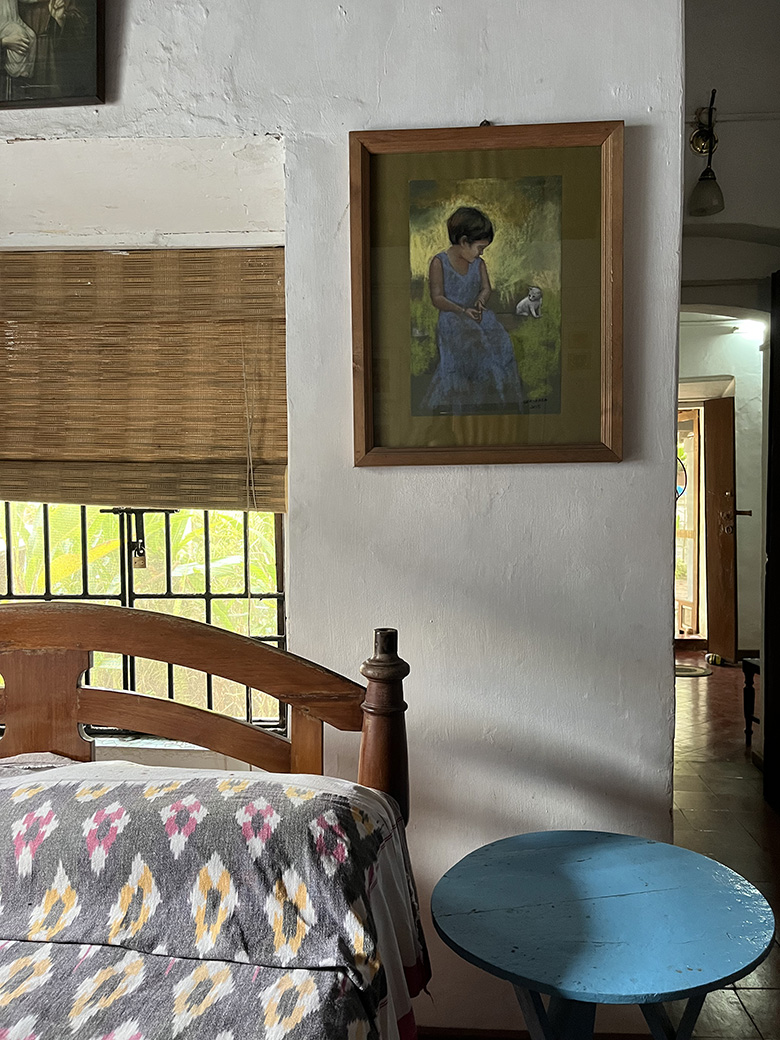
The art above the besides table is by Harshada Kerkar
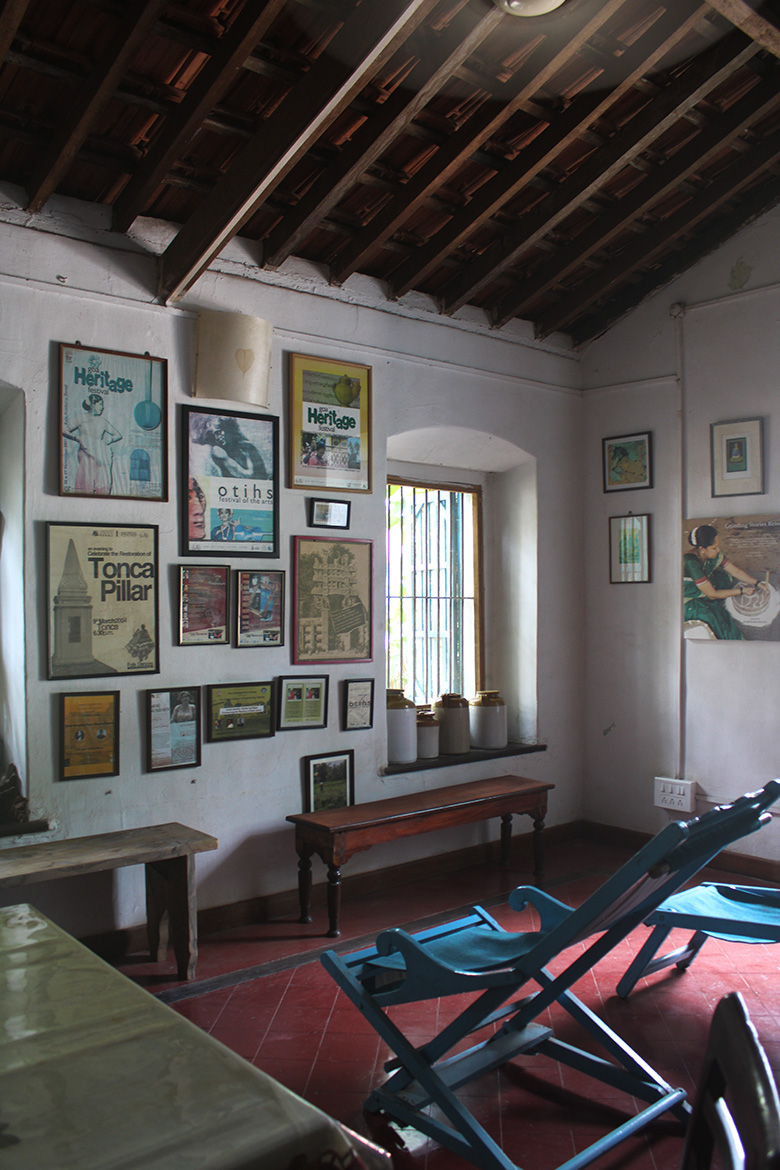
This is a corner in the dining room. The posters from all the heritage festivals Heta’s organisation has held since 2001
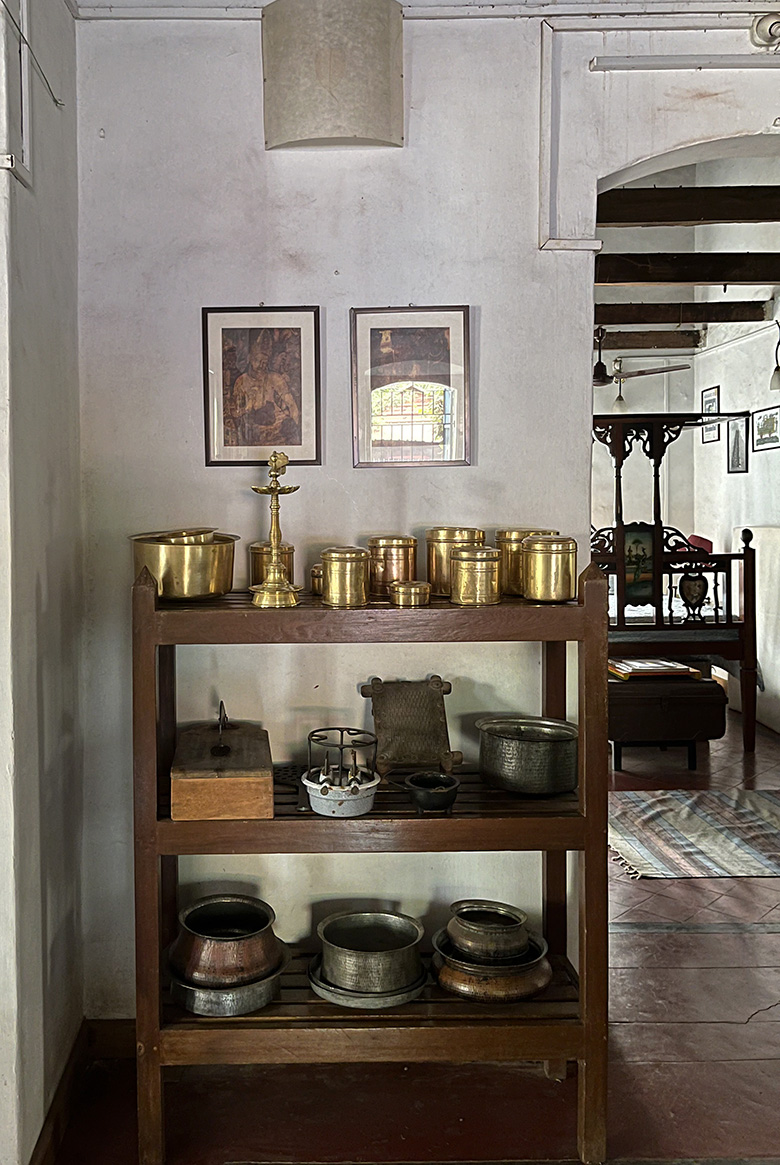
The brass containers and storage jars are all a gift from Heta’s friend. The water pots and coconut graters are from her family. The cooking pots are from her great grandmother. They have her name on them with the date 1924. Heta says, ‘These utensils are not just collectibles. They are deposits of memory. And, aptly placed in the dining room where food is served, enjoyed and talked about quite often!’

The water boiler in the corner is a gift from Heta’s friend. In days when Panchgani, a hill station in Maharatshtra , had no electricity, Heta’s family would heat bathwater in a similar boiler at their vacation home there. It is a reminder of her childhood
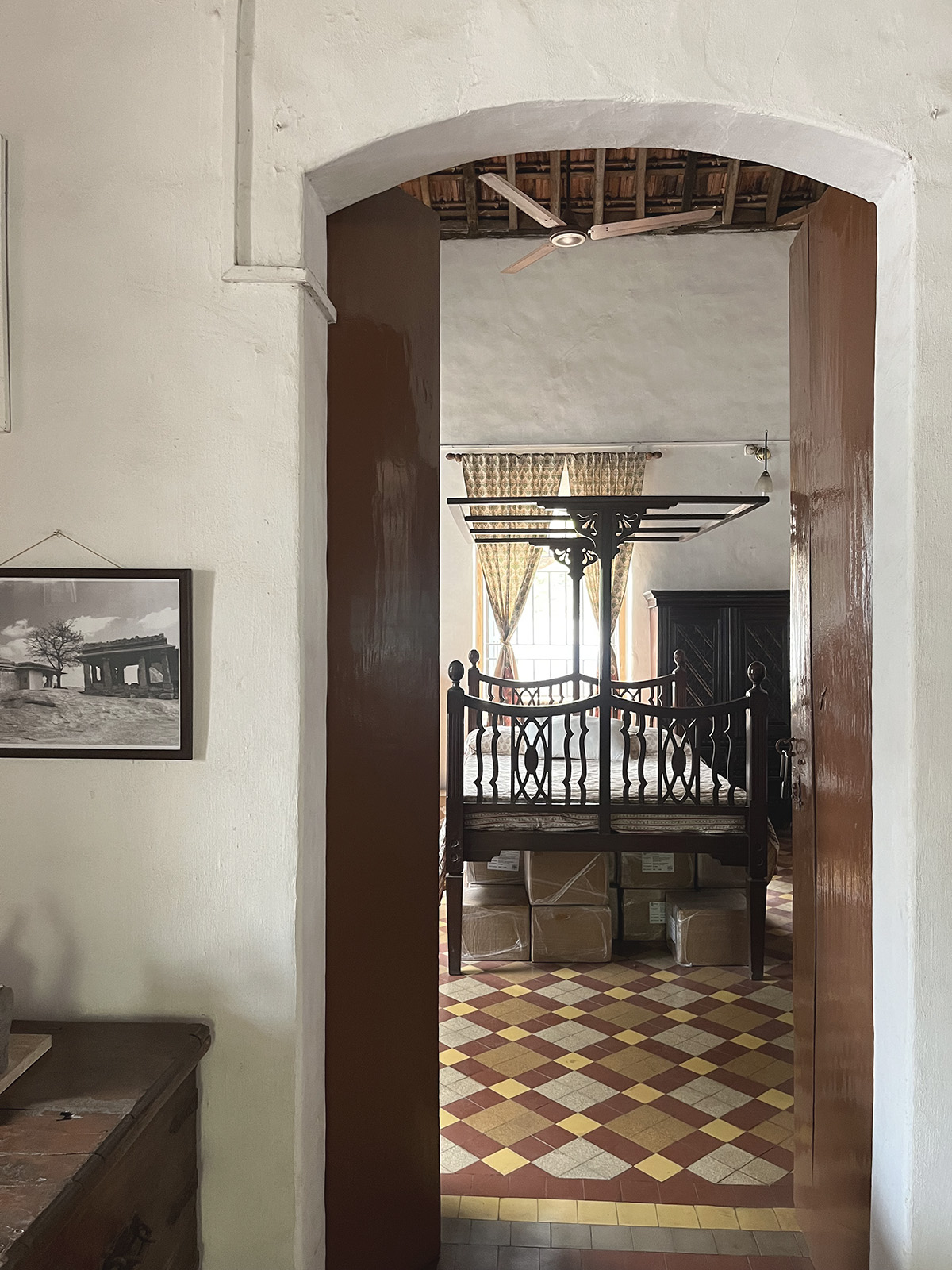
The guest bedroom as seen from the living room. Copies of Heta’s new book are stored under the bed.
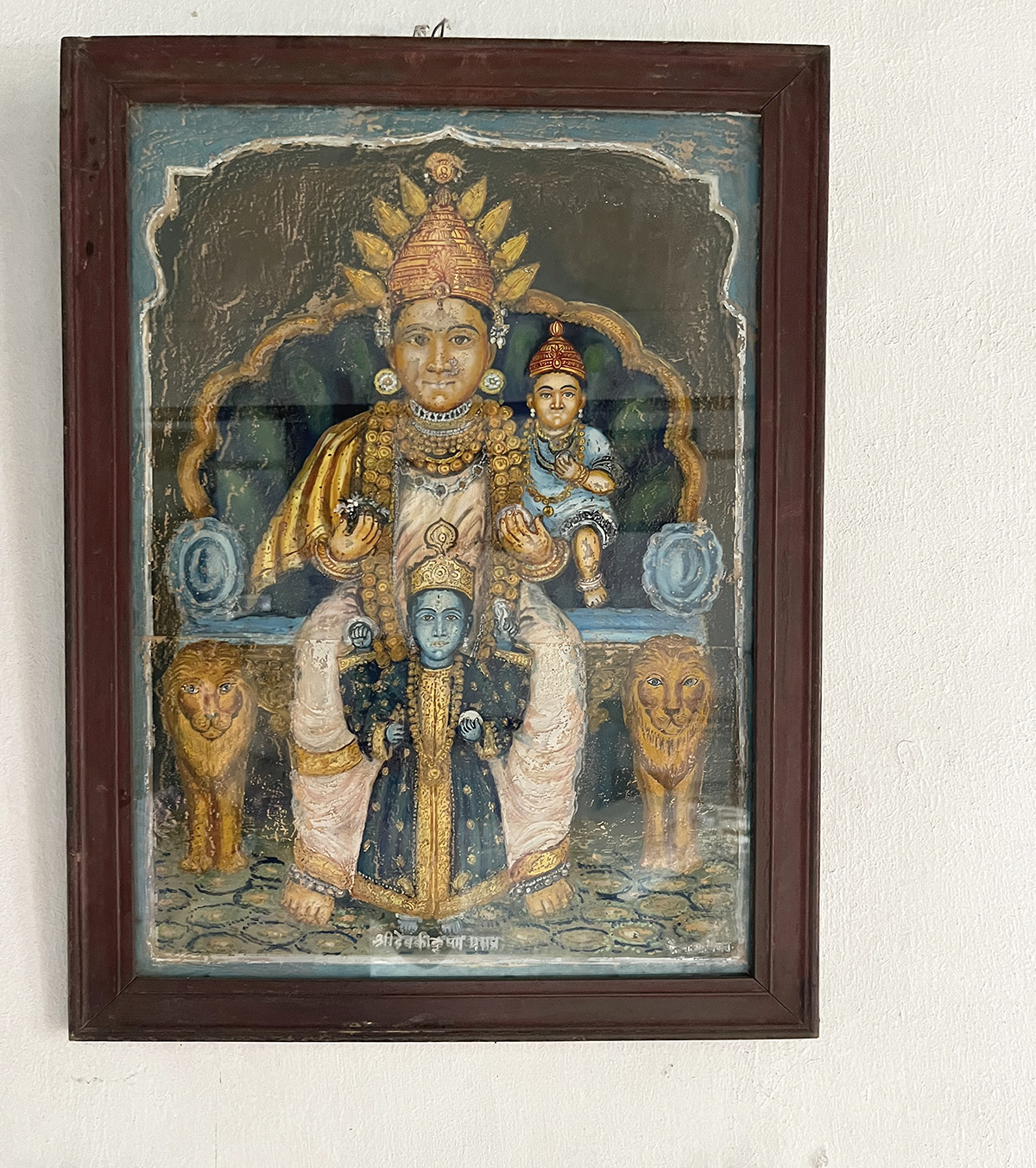
This is a glass painting. Painting on glass was done right up to the middle of the 1950s in Goa.

The poster is a print of an old map of Varanasi. The cats were a gift from from Heta’s friends, Daniel and Marj D’Souza from Assagao.

This chest of drawers came with the house and like many pieces of original furniture, remains untouched



